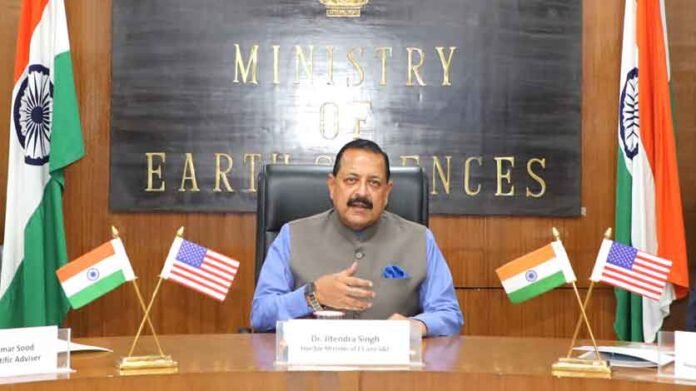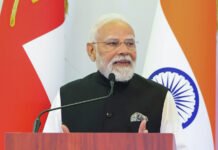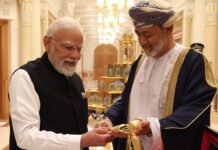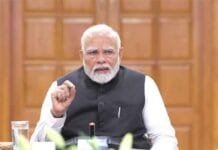Strengthening US-India Bilateral Cooperation in Clean Energy – Union Minister Dr. Jitendra Singh today led a crucial bilateral meeting on US-India Civil Nuclear Commerce at Prithvi Bhavan. The discussions emphasized the growing collaboration between the two countries in science, technology, and clean energy sectors. This meeting highlights a significant shift towards joint efforts in addressing global challenges through innovation and partnership.
Milestone Achievement in Indo-US Space Collaboration
Dr. Singh announced a notable advancement in Indo-US space relations: an Indian astronaut from the Gaganyaan Mission will soon join the International Space Station (ISS). This milestone represents a leap forward in space exploration and underscores the deepening cooperation between India and the United States. It also reflects the broader scope of collaboration across critical sectors.
India’s Commitment to Clean Energy and Green Hydrogen
Dr. Singh spotlighted the Green Hydrogen Mission as a fundamental element of India’s strategy to reduce carbon emissions across heavy industries, transportation, and power generation. He stressed that this mission is vital for fostering innovation in clean technologies and achieving global climate goals. Through strategic policy frameworks and international collaborations, India aims to lead the shift towards a sustainable energy future.
Exploring Small Modular Reactors (SMRs) for Clean Energy
In addition to green hydrogen, Dr. Singh discussed the potential role of Small Modular Reactors (SMRs) in India’s clean energy transition. The Indian government is actively exploring international partnerships, investing in research, and developing regulatory frameworks to support SMR deployment. These reactors are expected to significantly contribute to India’s energy self-reliance and climate goals.
Comparing India’s Anusandhan NRF and the US NSF
Drawing a comparison between India’s National Research Foundation (NRF) and the United States’ National Science Foundation (NSF), Dr. Singh highlighted their pivotal roles in advancing scientific research and innovation. This comparison underscores the importance of robust research frameworks in fostering global scientific progress.
Reaffirming India’s Climate Commitments
Dr. Singh reiterated Prime Minister Narendra Modi’s “Panchamrit” climate action plan. This plan aims to increase India’s non-fossil energy capacity to 500 GW, reduce carbon emissions by 1 billion tons, and achieve net-zero emissions by 2070. Such ambitious targets reflect India’s dedication to sustainable development and climate action.
Insights from Key Scientific Leaders
Dr. A. K. Sood, Principal Scientific Advisor to the Government of India, emphasized the transformative potential of the Indo-US partnership. He highlighted that this collaboration goes beyond knowledge exchange, focusing on co-creating solutions that drive sustainable development and economic prosperity.
Dr. Ravi Chandran, Secretary of Earth Sciences, discussed advancements in ocean energy and Carbon Capture, Utilisation, and Storage (CCUS) technologies. Meanwhile, Dr. Rajesh Gokhale, Secretary of the Department of Biotechnology, spotlighted India’s progress in biomass-to-energy conversion and biofuels.
Advancements in Emerging Technologies
Prof. Abhay Karandikar provided insights into India’s progress in emerging technologies such as data analytics, Artificial Intelligence (AI), and machine learning. He stressed the strategic importance of innovation in these fields for future technological leadership.
Dr. N Kalaiselvi, Director General of CSIR, highlighted developments in Lithium-Ion Battery technology and indigenous battery manufacturing. She emphasized the importance of sustainable and circular energy storage solutions.
Strengthening US-India Cooperation in Technology
The high-level US delegation, including John Podesta, Senior Advisor to the President of the USA for International Climate Policy, and David Turk, Deputy Secretary of the U.S. Department of Energy, participated in the discussions. The meeting concluded with both nations reaffirming their commitment to enhancing cooperation in emerging technologies. This partnership is set to boost economic growth, national security, and global leadership in technological advancements.
Conclusion
The meeting between India and the United States marks a significant step forward in their collaborative efforts towards clean energy and technological innovation. With initiatives like the Green Hydrogen Mission and SMR exploration, both nations are poised to lead in sustainable development and address global climate challenges effectively.
















